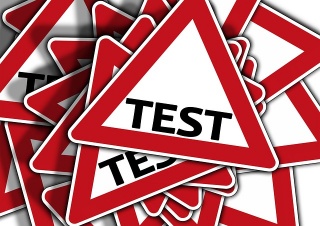Principles of marketing/PMKT102/Value proposition lifecycle/Quiz
From WikiEducator
Jump to: navigation, search
The questions published at the end of each learning pathway are re-used for the knowledge test for learners interested in earning a digital badge or certificate of participation for the Market research and customer insights (PKMT102) micro-course. Please consult the Certify participation page for more information.
True - false questions
Indicate whether the following statements are true or false:
- Marketing managers must find new products to replace those that are in the declining stage of the product life cycle (PLC) and learn how to manage products as they move through each of the five (5) stages.
- True
- Correct. The marketer must consider how to optimally position and market his/her product(s) through the five stages of the PLC: (1) Product Development, (2) Introduction, (3) Growth, (4) Maturity, and (5) Decline.
- False
- Incorrect. If the marketing manager fails to implement effective marketing and sales / promotion tactics throughout the product life cycle, an advantageous opening can be created for direct competition and alternate / substitute products and services.
- True
- Once a product or service is positioned, it stays that way throughout its product life cycle.
- True
- Incorrect. In marketing, nothing is static or constant. Marketers must be on the lookout for opportunities and threats to their products, and make adjustments and modifications to their marketing activities, so their products can successfully compete in the marketplace.
- False
- Correct. Products and brands are constantly being re-positioned as a result of changes in competitive and market situations. For example, in the introduction phase, a product may be positioned by application (e.g. a sports drink is for after exercising), but in the maturity stage, it may be positioned against direct competitors.
- True
- As part of a supply chain strategy, outsourcing has clear advantages over local sourcing.
- True
- Incorrect. Although companies may outsource from a supplier that can produce goods or services more cheaply, this can lead to other problems, such as reputational damage if unfair or unsafe conditions for workers are revealed.
- False
- Correct. In marketing, as in life, there are always trade-offs. A manufacturer may outsource production to another country, but then have concerns about shipping / transportation costs, product quality or timeliness to local markets. Outsourcing decisions must be weighed carefully, and evaluated over time, to see if it makes sense throughout the product life cycle stages.
- True
- The new-product development process consists of a number of detailed steps.
- True
- Correct. The product development process is a critical process and is well defined with a number of steps that are followed.
- False
- Incorrect. The product development process is a critical process and is not left to chance.
- True
Multiple choice questions
- Which ONE of the following descriptions characterizes the sales of products in the introductory stage of the Product Life Cycle?
- Rapidly rising
- No – sales are rapidly rising in the growth stage.
- Peak sales
- Incorrect - a product does not reach peak sales till early maturity.
- Low sales
- That’s right – product sales are low in the introductory stage as there is not much awareness of the new product and the early adopters that are likely to try the product are a very small percentage of the consumer population.
- Gradually declining
- Incorrect – sales do not usually start to decline until a product reaches maturity.
- Rapidly rising
- The product, service or idea that is perceived as new by potential customers is an example of:
- A new product
- Correct - a product or a service could be existing for customers of one market but new to potential consumers in a new market the company enters. (E.g. years ago McDonalds was only available in the US before it was introduced in other countries, so for potential consumers in the other countries it was introduced as a new product.)
- Adoption process
- No – this is the process a new product goes through when introduced to the market.
- An existing product
- Incorrect – a product or a service could be existing for customers of one market but new to potential consumers in a new market the company enters. (E.g. years ago McDonalds was only available in the US before it was introduced in other countries, so for potential consumers in the other countries it was introduced as a new product.)
- A new product
- Price skimming strategy or charging a premium price is an effective strategy at :
- The first introductory stage
- Correct – price skimming commonly occurs in technological markets as firms set a high price during the first stage of the PLC. The top segment of the market, which is willing to pay the highest price, is skimmed off first. When the product enters maturity the price is then gradually lowered.
- The maturity stage
- Not really – the market is saturated at that stage and price reductions are a more likely pricing approach.
- The decline stage
- Incorrect – at this stage demand and sales are declining and such premium pricing will not be effective.
- The first introductory stage
- Which ONE of these lists correctly summarises the five-stage Product Life Cycle?
- Product development, introduction, growth, maturity, decline
- Correct – these are the five PLC stages. (However, note that some marketing texts break it down into only four stages, not including product development at the beginning.)
- Product development, marketing, growth, maturity, decline
- No – marketing happens throughout the life cycle, and this list omits one of the stages.
- Introduction, product adoption, growth, maturity, decline
- No - product adoption is a process throughout the PLC, not a PLC stage.
- Product development, introduction, growth, maturity, decline
